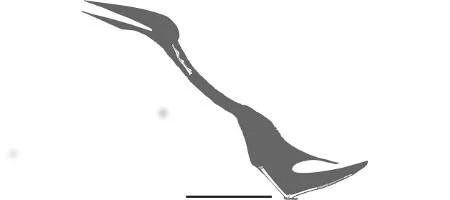A new kind of flying reptile from the late Cretaceous has been identified from bones found in Romania’s Transylvanian Basin.

Around 68 million years old, the new species has been named Eurazhdarcho langendorfensis, and belongsto a group of pterosaurs called the azhdarchids. These were long-necked, long-beaked pterosaurs whose wings were strongly adapted for a soaring lifestyle.
Several features of their wing and hind limb bones show that they could fold their wings up and walk on all fours when needed.
“With a three-metre wingspan, Eurazhdarcho would have been large, but not gigan
tic” says Dr Darren Naish, from the University of Southampton. “This is true of many of the animals so far discovered in Romania; they were often unusually small compared to their relatives elsewhere.”
The discovery is the most complete example of an azhdarchid found in Europe so far – and its discovery supports a long-disputed theory about their behaviour.
“Experts have argued for years over the lifestyle and behaviour of azhdarchids. It has been suggested that they grabbed prey from the water while in flight, that they patrolled wetlands and hunted in a heron or stork-like fashion, or that they were like gigantic sandpipers, hunting by pushing their long bills into mud,” says Dr Gareth Dyke ofthe National Oceanography Centre in Southampton.
“One of the newest ideas is that azhdarchids walked through forests, plains and other places in search of small animal prey. Eurazhdarcho supports this view of azhdarchids, since these fossils come from an inland, continental environment where there were forests and plains as well as large, meandering rivers and swampy regions.”






